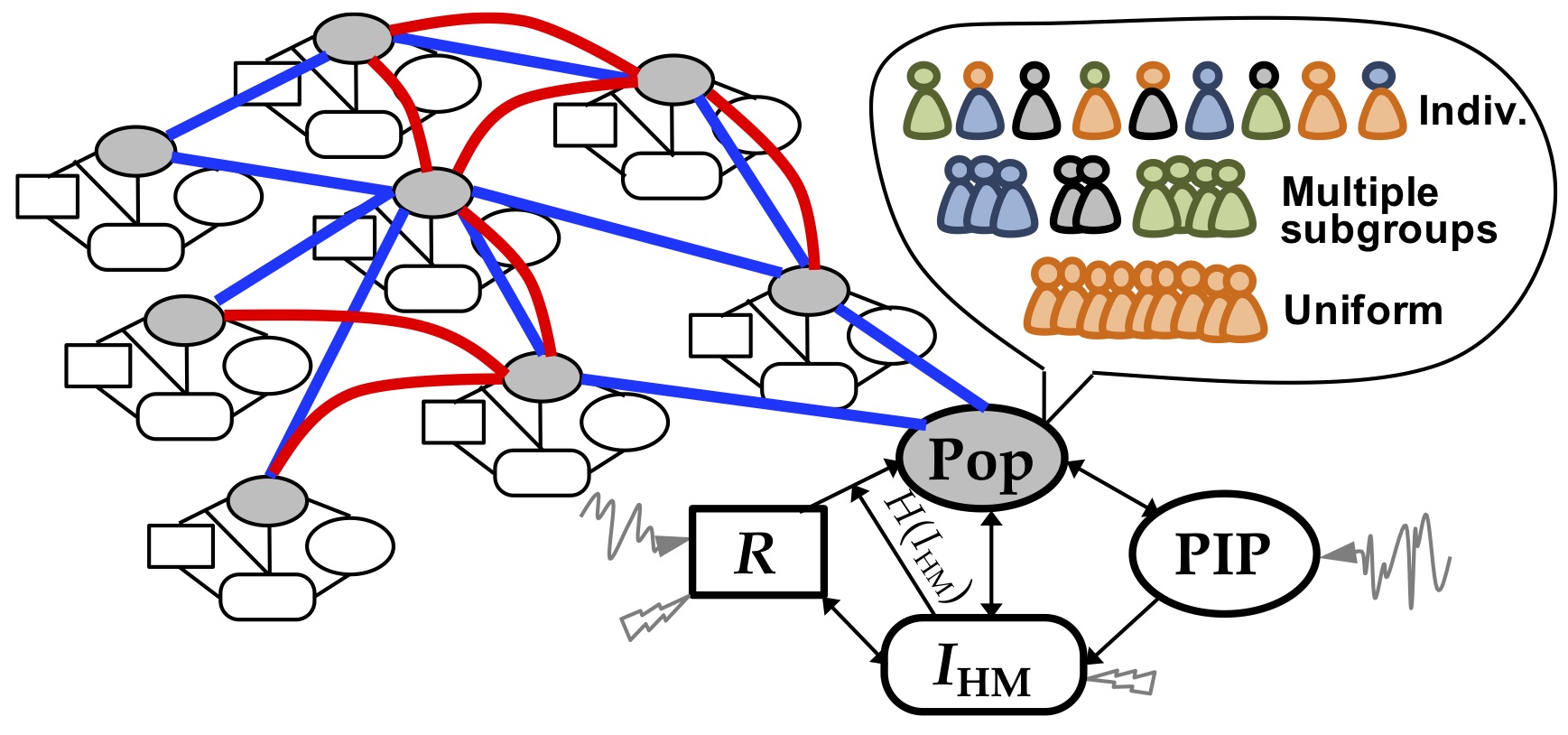Towards a Multi-Scale Theory on Coupled Human Mobility and Environmental Change
Funding: 2018 Department of Defense Multidisciplinary Research Program of the University Research Initiative N00014-17-S-F006 Topic #8 (N00014-17-S-F006.pdf)
2 POSTDOCTORAL AND 3 DOCTORAL FELLOWSHIPS AVAILABLE!! Please click on "Job Posting" tab below for detail and download announcement here : MURI_jobsAd.pdf
Description
This project addresses MURI topic #8 (ARO). The project involves the University of Florida, Columbia University, and East Carolina University.
Identification of Research Problem
The magnitudes and problems associated with migration are of grave concern, but a satisfactory, mechanistic and predictive theory of the interdependence between human mobility and environmental changes is still lacking. Several theories and models have been proposed to understand and describe these “push” and “pull” forces that drive migration, but many of them are piecemeal and fragmented. There is a need for a richer theory that fills knowledge gaps and integrates existing, but fragmented, bodies of knowledge. Such a theory is necessary for successful prevention and/or intervention plans.
Objectives
(1) To develop a modeling framework that is flexible enough to evaluate and integrate exiting migration theories, incorporate novel elements, and lend itself well to theory development; and (2) To use such a modeling framework to develop an integrative theory on coupled dynamics of migration and environmental change.
Methods/Technical Approaches
The migration process will be modeled as movements of people in a multilayer network of populations, with each location having its own coupled dynamics between environmental and social components and each pair of sending and receiving locations connected by multiple types of linkages. The model will be applied to at least four cases studies: one with a natural disaster (a hurricane); one with degrading socio-economic conditions punctuated by a natural disaster; one with a persistent drought, and one as an example of “secondary pushes” and emerging migration patterns. Based on lessons and insights learned from these cases and (increasingly) available data on migration, additional case studies may be explored. These cases include a range of environmental changes, namely sudden shocks and gradual changes, which invoke different migratory responses. The node-level dynamics will first be studied by low-dimensional, dynamical system models, which will clarify the nature of migration-inducing tipping points and provide guidelines for how to add more realistic complexity to the models. Relationships between locations/populations, which relate to different migration theories, will be represented by different layers in a multilayer or multiplex network.

The structure between these relationships and migration will be inferred by Bayesian framework, which is flexible enough to incorporate qualitative inputs and expert opinions. The models will be driven by environmental changes, including climate extremes. In each case study, the model complexity will be grown carefully—more model complexity does not always mean better results or understanding. Global sensitivity analysis will be used to analyze how the model precision in predicting migration outcomes changes with model complexity, thereby identifying the right level of model complexity for prediction purposes and for theory development. Annual workshops will be held that invite experts on migration theories, environmental modeling, and other related fields to provide feedbacks and constructive criticism on the development of models and integrative theory.
Anticipated outcome
If successful, the project will produce a modeling framework that have predictive power with satisfactory precision and is flexible enough to accommodate different theories (and therefore applicable to a wide range of cases) as well as an integrative theory of migration and environmental change.
Impact on DoD Capabilities
The results of this project will provide interested DoD entities an enhanced ability to anticipate and predict population movements resulting from environmental changes, including a development of a more effective migration early warning system. Such ability will help foster better logistical responses on the part of DoD to any given event or sets of events.
This page was last updated on July 13, 2019.